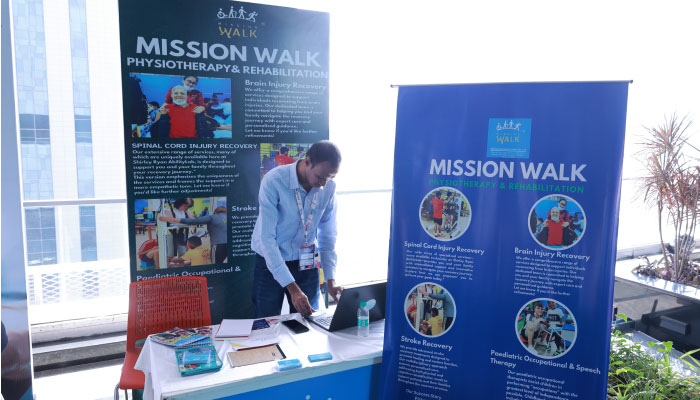A routine health check up of your aunt leaded to further examination, as she was complaining of some bleeding while passing her stools. A polyp (an abnormal growth of tissue) was found in the intestinal wall, which the doctor removed surgically. The doctor mentioned that had the screening test not been done, such polyps could develop to become cancerous. More importantly, at least 50 to 60 percent of the deaths resulting from colorectal cancer can be prevented if men and women older than 50 years would get screened routinely.
Defining cancer
The human body is made up of millions of living cells, which grow, multiply and die in an orderly manner throughout a person’s life. When the cells start dividing abnormally, without any control, a mass is formed known as a tumor. When a tumor is malignant, the cells are cancerous, and invade and kill the body’s healthy tissue. Cancer can thus spread and form new tumors in other parts of the body.
Colorectal cancer is cancer of the colon (large intestine) or rectum (connecting path of colon to anus), and can also be called colon cancer in short. This is the third most common non-skin type of cancer in men and women. However, if it is diagnosed much earlier through screening, then there are good chances of cure and not life-threatening.
Signs and symptoms
Many times, no symptoms are present in people who have the polyps or cancer, especially in early stages. Symptoms that eventually develop include:
- Change in bowel movement (diarrhea or constipation)
- An urge to have a bowel movement, when there isn’t one
- Rectal bleeding, blood in stools
- Stomach pain/cramp
- Weakness
- Unexplained weight loss
Any such signs and symptoms should prompt a visit to a doctor and not be ignored.
Screening tests
Since, the symptoms are not pronounced initially, screening tests are very important for early detection and effective treatment. These can be divided into two broad groups:
1.Tests to find polyps and cancer: Here, the structure of the colon is examined to look for abnormal areas. Hence, polyps found can be removed before they become cancerous. The tests include:
- Flexible sigmoidoscopy
- Colonoscopy
- Double-contrast barium enema
- Computed tomography (CT) colonoscopy
In flexible sigmoidoscopy, a flexible, lighted tube is inserted into the lower part of the colon through the rectum, and examination for cancer or polyps is done. Only half the length of the colon can be seen, as the tube is only 2 feet long. The procedure is not painful, but can be uncomfortable as air is pumped into the colon. Prior to this procedure, medication will be given to clean out the colon and rectum, so that the insides can be seen clearly. Any small polyp observed may be removed during the test itself. If any signs of cancerous growths are seen, a colonoscopy will be performed. This procedure takes around 10 to 20 minutes, and may be performed with or without sedation, as per discussion with the doctor and comfort level of the patient. After the test, a small amount of blood may be seen in the first bowel movement, and rare complications include significant bleeding or puncture of the colon.
In colonoscopy, an instrument called the colonoscope is used which is a longer version of the sigmoidoscope. Here, the entire length of the colon can be examined for polyps or any other abnormality. A biopsy can be taken in lieu of any suspicious growth seen. For this, a sample of tissue can be taken out through the colonoscope and sent to the laboratory for examination. Prior to the test, the rectum and colon will be cleaned out by taking medication a day before, and then an enema in the morning. Detailed instructions will be given that need to be followed before the procedure and any doubts arising must be clarified with doctor or nurse. The entire procedure lasts for 30 minutes, but may last longer if a polyp needs to be removed or any tissue sample needs to be taken for biopsy purpose. This will be done under sedation, and the patient may not remember the test once it is done. At times, there can be changes in heart rhythm or low blood pressure due to the drugs used, but will resolve. There can be blood in the stools for a couple of days after the test. Rarely, the colonoscope might puncture the colon or rectal wall, resulting in perforation, which will require surgery to fix. Otherwise, colonoscopy is a safe procedure.
In double contrast barium enema, a chalky substance (barium sulfate) is used to partly fill and open the colon. Then air is pumped to expand the colon so that X-rays can be taken. Incase of any abnormality, a colonoscopy will have to be done. Here, sedation is not carried out, but some discomfort may be felt due to pumping of barium sulfate and air through a tube. Bloating or cramping may be felt after the test and the barium can cause constipation for a few days.
Virtual colonoscopy is like an advanced CT scan of the colon. As the patient lies down on the table, the CT scanner takes many pictures in a rotating manner. A computer then puts these images together to get both, a 2-dimensional X-ray picture and a 3-dimensional view of the insides of the colon and rectum. This procedure is done in those who do not want any instrument to be inserted in the colon or rectum. The time taken is less and no sedation is required. Nevertheless, like other procedures, bowel preparation is required, and a short tube is inserted in the rectum to fill the colon with air. Any abnormal findings will require a colonoscopy to be done.
2. Tests that mainly find cancer: Here, the stools are tested for signs of cancer, by looking for small amounts of hidden (occult) blood. These tests can be done at home and are more convenient, but do not help in finding polyps. A positive result with these tests will require a colonoscopy for further examination. These include;
- Fecal occult blood test (FOBT)
- Fecal immunochemical test (FIT)
- Immunochemical fecal occult blood test (iFOBT)
The above-mentioned tests all involve collecting stool samples and sending to the laboratory for testing. They are based on the principle that in the presence of polyps or cancer, damaged blood vessels release a small amount of blood in the feces. The blood is detected through a chemical reaction, and if positive, the origin of the blood cannot be ascertained. Hence, a colonoscopy will be required to confirm the diagnosis. The clinic will provide the patient a kit, with exact instructions on how to collect the samples and what precautions to follow. Usually, three consecutive bowel movements are smeared onto small squares of paper. The kit is then returned to the doctor’s office (within 2 weeks) for testing. Certain food and drugs need to be avoided prior to testing, such as non-steroidal anti-inflammatory drugs (7 days before testing), vitamin C supplements (3 days before testing) and red meat (3 days before testing). Such food and drugs can result in false-positive reactions.
Such blood tests need to be done every year and the doctor must be approached for any clarifications. Tests to find both colorectal polyps and cancer are preferred because they prevent the cancer from developing.
Screening and risk factors
Ideally, men and women over 50 years of age must begin screening with one of the following tests:
- A fecal occult blood test or fecal immunochemical test every year
- A flexible sigmoidoscopy every 5 years
- A double contrast barium enema every 5 years
- A colonoscopy every 10 years
- A virtual colonoscopy every 5 years
Those at a higher risk may need screening earlier (before 50 years of age) and such risk factors include:
- A family history of inherited colorectal cancer syndromes, such as familial adenomatous polyposis (FAP) or hereditary nonpolyposis colorectal cancer (HNPCC)
- First-degree relatives (parent, sibling, or child) having colorectal cancer or polyps before 60 years of age.
- Personal history of colorectal cancer or polyps
- Personal history of chronic inflammatory bowel disease.
- Diet high in red and processed meats
Screening for higher-risk people is mostly done using colonoscopy.
Screening saves lives
Colorectal cancer begins with an abnormal growth (a polyp) and cancer has not yet set in. Thus, screening tests will help your doctor detect these growths before they become cancerous. The good news is that most people who have polyps removed do not get the cancer. Screening tests that detect both polyps and cancer should be the first choice if available and you are willing to have them. Doctors firmly believe that preventing colorectal cancer and not just finding it early should be the main reason for screening tests



